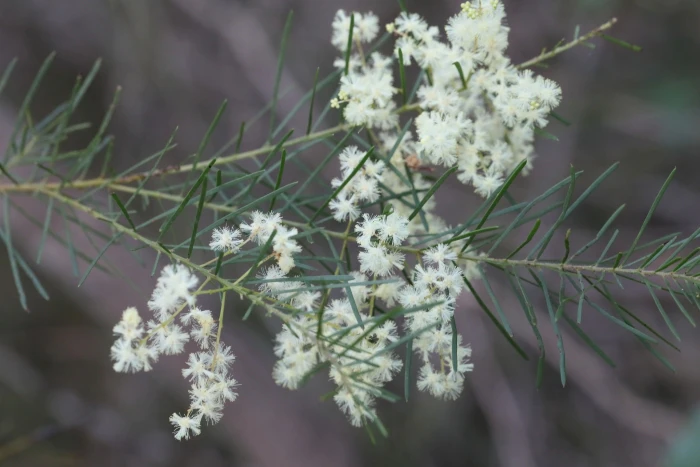White Wattle
(Acacia linifolia)
White Wattle (Acacia linifolia)
/
/

© tobyyy
CC BY-SA 4.0
Image By:
© tobyyy
Recorded By:
Copyright:
CC BY-SA 4.0
Copyright Notice:
Photo by: © tobyyy | License Type: CC BY-SA 4.0 | License URL: http://creativecommons.org/licenses/by-sa/4.0/ | Uploader: tobyyy | Publisher: iNaturalist |

























Estimated Native Range
Climate Requirements for Hollywood, Florida
| This Plant | Your Site | Plant Suitability for Your Location | ||
|---|---|---|---|---|
| • Precipitation | 8" - 66" | 61" | Aquatic | Aquatic |
| • High Temp. | 67°F - 100°F | 90°F | Your summer temperatures are normal for this plant. | Excellent |
| • Low Temp. | 25°F - 53°F | 59°F | OK, but your winter temperatures are warmer than normal for this plant | OK |
This plant may not grow well at your location - your precipitation is too high.
Summary
Acacia linifolia, commonly known as White Wattle or Flax Wattle, is a perennial shrub native to open woodlands and forest edges in eastern Australia, particularly New South Wales. It typically grows to a height of 5-13 feet (1.5-4 meters) and has an erect or spreading habit. The bark is greyish, smooth, or finely fissured, and the plant is characterized by its linear phyllodes instead of true leaves. From July to October, it produces showy pale yellow to white flowers in spherical heads, which are attractive to a variety of pollinators.
White Wattle is valued for its fast growth and ornamental flowers, making it suitable for use in urban planting, border planting, and as a feature in native gardens. It requires full sun to part shade, moderate water, and well-drained soils. While it is relatively low-maintenance, it can be susceptible to root rot in poorly drained soils. In cultivation, it can be pruned to maintain a desired shape or to promote denser foliage. Due to its potential for invasiveness when grown outside its native range, it is important to consult local guidelines before planting.CC BY-SA 4.0
White Wattle is valued for its fast growth and ornamental flowers, making it suitable for use in urban planting, border planting, and as a feature in native gardens. It requires full sun to part shade, moderate water, and well-drained soils. While it is relatively low-maintenance, it can be susceptible to root rot in poorly drained soils. In cultivation, it can be pruned to maintain a desired shape or to promote denser foliage. Due to its potential for invasiveness when grown outside its native range, it is important to consult local guidelines before planting.CC BY-SA 4.0
Plant Description
- Plant Type: Shrub
- Height: 2-6 feet
- Width: 2-6 feet
- Growth Rate: Rapid
- Flower Color: Yellow
- Flowering Season: Winter, Spring
- Leaf Retention: Evergreen
Growth Requirements
- Sun: Full Sun, Part Shade
- Water: Medium
- Drainage: Fast
Common Uses
Bird Garden, Butterfly Garden, Drought Tolerant, Erosion Control, Hedges, Low Maintenance, Showy Flowers, Street Planting
Natural Habitat
Native to open woodlands and forest edges in eastern Australia
Other Names
Common Names: Flax Wattle, Swamp Wattle
Scientific Names: Acacia linifolia, Acacia abietina, Acacia linearis, Acacia linearis, Acacia linifolia var. linifolia, Mimosa abietina, Mimosa capillaris, Mimosa linearis, Mimosa linearis
GBIF Accepted Name: Acacia linifolia